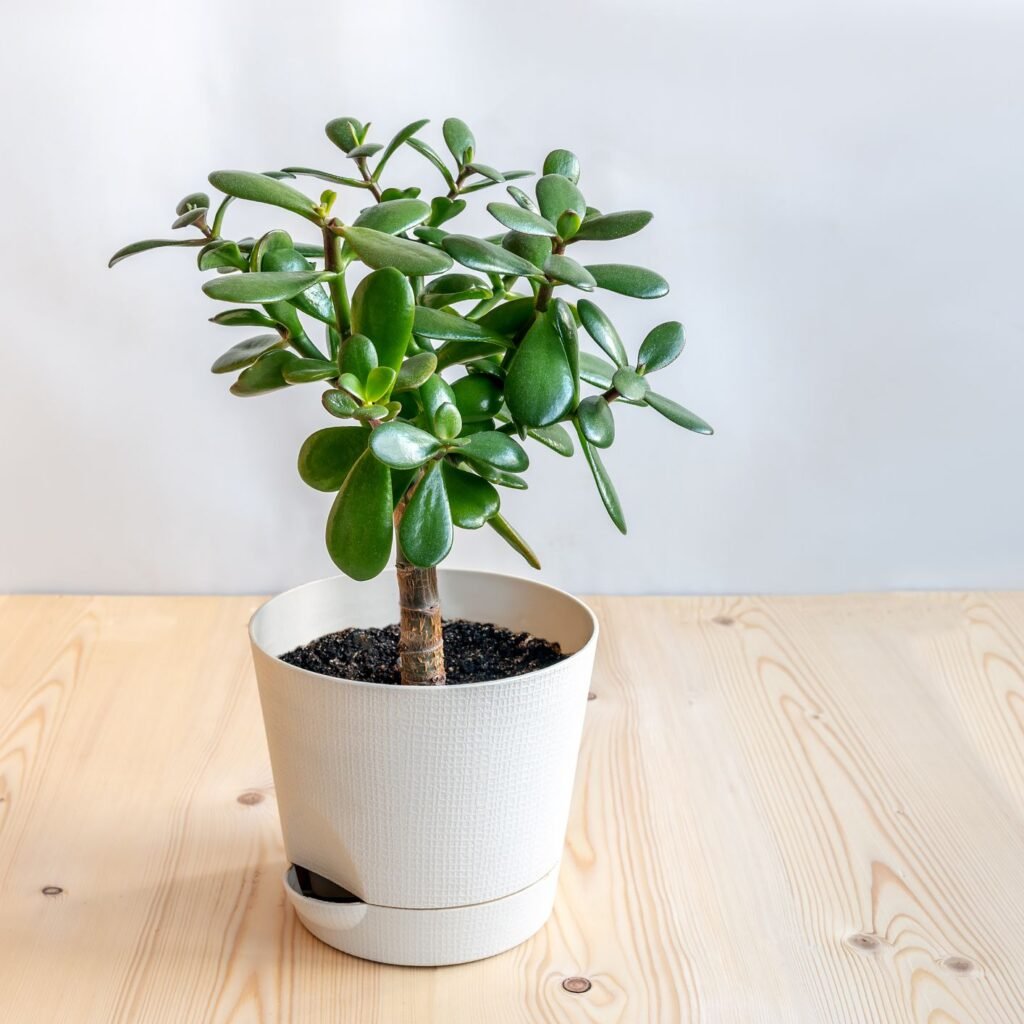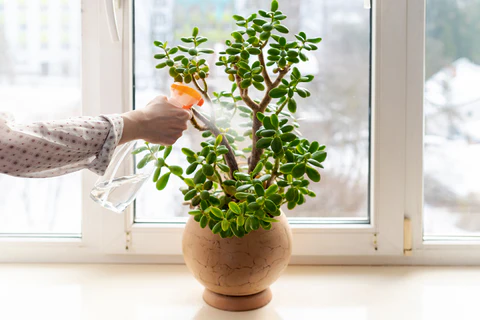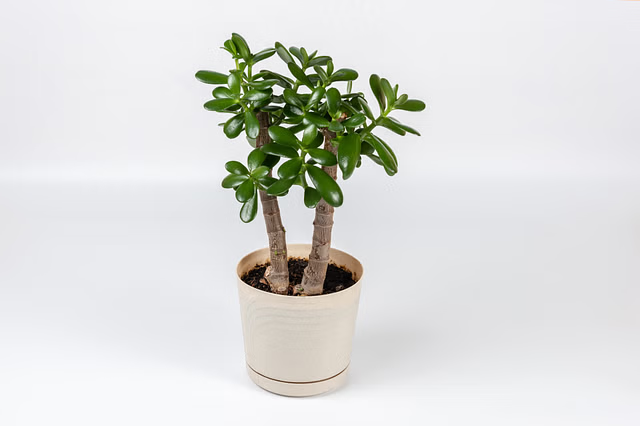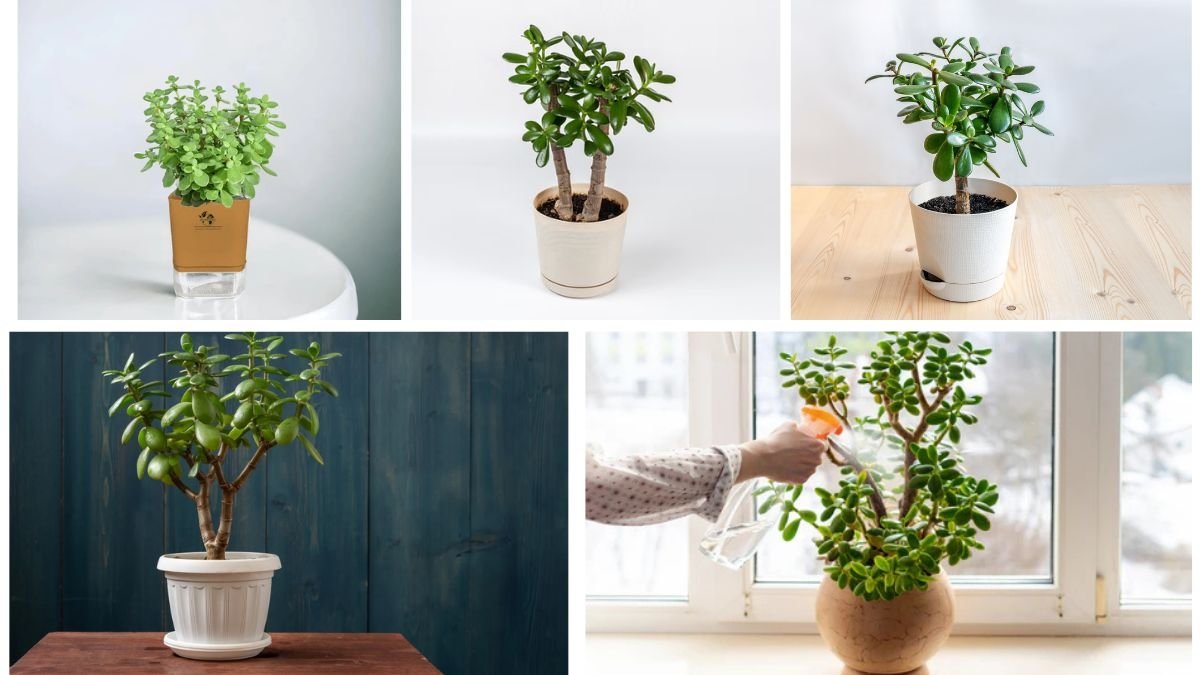The jade plant (Crassula ovata), also called the “money plant” or “lucky plant,” is a hardy succulent admired for its lush, coin-shaped green leaves and easy-going nature. Known as a symbol of prosperity and good fortune, the jade plant is a popular choice for both homes and offices. Whether you are a beginner gardener or a seasoned plant enthusiast, this resilient plant can thrive under a wide range of conditions with just a little care.
This guide will walk you through step-by-step jade plant care, including sunlight, watering, soil, propagation, and troubleshooting tips, so you can enjoy a healthy jade plant anywhere, anytime.
Understanding the Jade Plant

Jade plants are native to South Africa and Mozambique, where they thrive in sunny, dry environments. As succulents, they store water in their thick, fleshy leaves and stems, making them drought-tolerant and low-maintenance.
Key features include:
- Lifespan: With proper care, jade plants can live for decades, often passed down as heirlooms.
- Growth: They grow slowly, reaching 2–5 feet tall indoors.
- Appearance: Glossy, oval leaves that can turn red at the edges when exposed to bright sunlight.
- Symbolism: In Feng Shui, jade plants are believed to attract wealth, health, and harmony.
Light Requirements

Jade plants love bright, indirect sunlight but can adapt to different lighting conditions, making them versatile for both homes and offices.
- Indoors: Place your jade plant near a south- or west-facing window for at least 4–6 hours of sunlight daily. If natural light is limited, supplement with a grow light.
- Outdoors: If kept outside, introduce the plant gradually to full sun to prevent leaf scorch.
- Low Light Adaptability: Jade plants can survive in lower light, but growth will be slower and leggier.
Tip: Rotate the pot occasionally to encourage even growth and prevent the plant from leaning toward the light source.
Watering the Jade Plant

Overwatering is the most common mistake jade plant owners make. Since they are succulents, jade plants need less water than most houseplants.
- When to Water: Let the top 1–2 inches of soil dry out completely before watering.
- Watering Frequency:
- In spring and summer (active growth): water every 2–3 weeks.
- In fall and winter (dormant season): water once a month or less.
- How to Water: Water deeply until excess drains from the bottom, but never let the pot sit in water.
Warning: Yellow, mushy leaves are a sign of overwatering, while wrinkled, dry leaves indicate underwatering.
Soil and Potting

Jade plants need well-draining soil to prevent root rot.
- Best Soil Mix: Use a cactus or succulent potting mix. You can also make your own by mixing:
- 2 parts regular potting soil
- 1 part perlite or coarse sand
- Container Choice: Choose a pot with drainage holes. Terra-cotta pots are ideal as they absorb moisture and keep roots dry.
Repotting Tip: Repot every 2–3 years in spring to refresh the soil and give roots more space. Jade plants prefer slightly snug pots.
Temperature and Humidity
One of the jade plant’s best features is its ability to adapt to different climates.
- Temperature Range: Thrives between 65°F–75°F (18°C–24°C) but can tolerate as low as 50°F (10°C).
- Humidity: Jade plants prefer dry air and don’t need extra humidity. Avoid placing them in overly damp rooms.
- Outdoors: In frost-prone regions, bring jade plants indoors during winter as they are not frost-tolerant.
Fertilizing Your Jade Plant
Jade plants don’t require heavy feeding but benefit from occasional fertilizer.
- Fertilizer Type: Use a balanced, water-soluble fertilizer diluted to half strength or a cactus/succulent fertilizer.
- Feeding Schedule:
- During the growing season (spring and summer): once every 4–6 weeks.
- During dormancy (fall and winter): skip feeding.
Note: Over-fertilizing can burn roots and cause weak growth.
Pruning and Shaping
Pruning helps maintain a jade plant’s shape and encourages branching.
- When to Prune: In spring or early summer.
- How to Prune: Use sterilized scissors or pruning shears to remove leggy stems, dead leaves, or overgrown branches.
- Shaping: You can train jade plants into bonsai-style trees by pruning carefully and wiring stems.
Propagation Made Easy

Jade plants are among the easiest houseplants to propagate, making them perfect for sharing with friends or expanding your garden.
Propagation Methods:
- Leaf Cuttings:
- Remove a healthy leaf, let it callus for 1–2 days, then place it on well-draining soil.
- Mist occasionally until new roots and tiny leaves appear.
- Stem Cuttings:
- Cut a healthy stem 3–4 inches long.
- Allow it to dry for a day, then plant it in soil.
- Within weeks, roots will develop, and a new plant will grow.
Tip: Propagation works best during spring or summer when the plant is actively growing.
Will Jade Plants Flower?
Yes, jade plants can bloom with clusters of tiny white or pink star-shaped flowers, though it is rare indoors. Blooming usually happens in winter under the right conditions:
- Provide lots of sunlight.
- Reduce watering in late fall.
- Keep in cooler night temperatures (around 55°F/13°C).
Common Problems and Solutions
Even though jade plants are hardy, they may encounter issues if not cared for properly.
- Wrinkled, Shriveling Leaves – Underwatering. Increase watering slightly.
- Yellow, Mushy Leaves – Overwatering. Allow soil to dry before watering again.
- Leaf Drop – Sudden environmental changes, low light, or overwatering.
- Pests: Watch out for mealybugs, spider mites, and aphids. Treat with neem oil or insecticidal soap.
Benefits of Growing Jade Plants
- Air Purification: Helps clean indoor air.
- Low Maintenance: Perfect for beginners or busy people.
- Longevity: Can live for decades, becoming part of your family tradition.
- Symbolism: Attracts prosperity, luck, and positive energy.
Final Thoughts
The jade plant is more than just a beautiful succulent—it’s a symbol of resilience, good luck, and enduring beauty. By providing bright light, well-draining soil, careful watering, and occasional feeding, you can keep your jade plant thriving anywhere, anytime. Whether you want a low-maintenance office desk plant, a striking bonsai centerpiece, or a symbolic home companion, the jade plant is an excellent choice.
With just a little attention, this green gem will reward you with lush foliage and maybe even delicate blooms—making it one of the most rewarding houseplants you’ll ever grow.






Leave A Comment